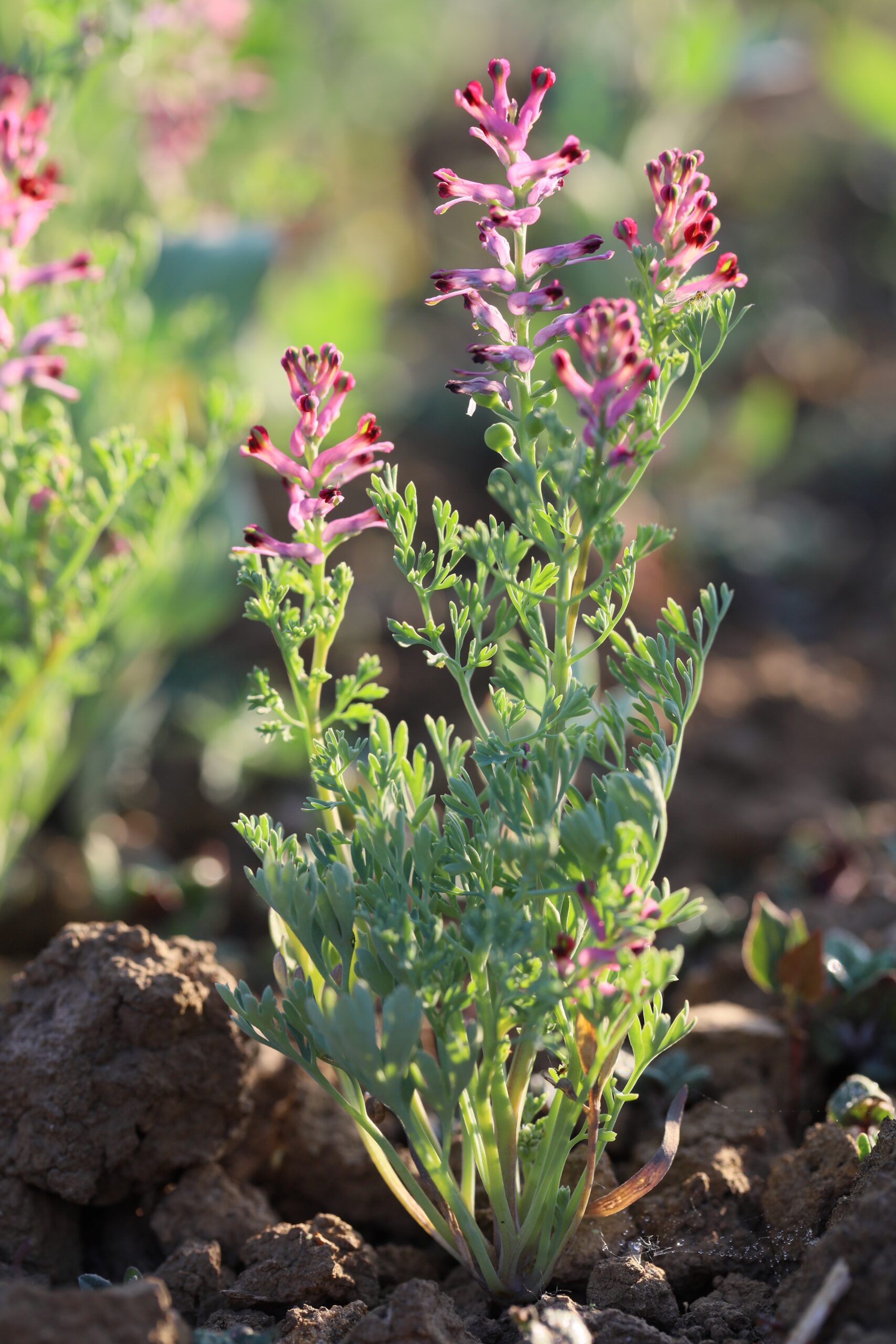Description
Common fumitory is a summer annual wild flower introduced to Britian with the arrival of agriculture. It is a scrambling plant with small, divided grey-green leaves and pink flowers tipped with crimson. The fumitories have a very distinctive flower with a large upper petal with a sac-like, nectar producing spur at is base, flanked by two lateral wing petals and a long, narrow lower petal often spatulate at its tip. In addition to the four petals are two sepals the size and shape of which can be useful when identifying to species level. This is the commonest and most widespread of the ten fumitory species found in Britian. The small size of the sepals and the shape of its fruit distinguish it from the other species, but they can be a tricky to separate and a good field guide is essential.
The general form of the plant and colour of its foliage can look a little like smoke rising from the ground hence Fumitory from fūmus terrae (Smoke of the Earth). Pliny the Elder wrote that rubbing one’s eye with the sap of this plant brings forth tears like acrid smoke does. This seems to have led to its use as an eyewash for conjunctivitis. It is however mildly toxic so best avoided. Pliny also said that if one suffers from a low libido the right section of a vulture’s lung rapped in the skin of a crane and worn as an amulet would help, so it might be best to seek more recent and scientific treatments!
Common fumitory has an important role to play in the conservation of one of our most rapidly declining breading birds, namely the Turtle dove. Once a common and familiar bird its distinctive call was considered the quintessential sound of an English summer. In the 70’s it could still be found over most of England south of a line from the Tees to the Mersey however since 1995 it has undergone a 95% decline with the distinct possibility that it will be lost as a breading bird within the next ten years. The cause of this decline is complex at not fully understood but a lack of food for chicks seems to be a major issue. Chicks are fed ‘crop milk’ by their parents and studies have shown common fumitory fruits, which start to ripen as the chicks hatch in May, are a major component of this milk.
Habitat Information
It is found on arable fields, waste ground, allotments, gardens and other disturbed land particularly on well drained, calcareous soils.
Growing Information
In the wild, germination is mainly in the autumn and winter, but some can germinate following spring cultivations. Easy to grow from seed sown any time from August to late April, but best sown before the end of March.


